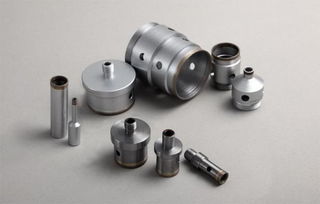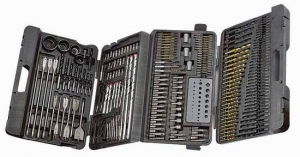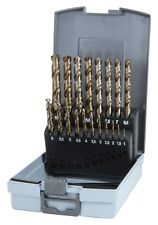
Understanding Drill Press Bits: A Comprehensive Guide
Drill press bits are essential tools for any woodworking or metalworking project. Whether you’re a hobbyist or a professional, having the right drill press bit can make all the difference in the quality and efficiency of your work. In this detailed guide, we’ll explore the different types of drill press bits, their uses, and how to choose the right one for your needs.
Types of Drill Press Bits

There are several types of drill press bits, each designed for specific materials and applications. Here’s a breakdown of the most common types:
| Bit Type | Description | Best Used For |
|---|---|---|
| High-Speed Steel (HSS) | These bits are made of high-speed steel and are suitable for drilling into wood, metal, and plastic. | General-purpose drilling |
| Carbide-Tipped | Carbide-tipped bits are durable and can withstand high temperatures, making them ideal for drilling into hard materials like stainless steel and cast iron. | Hard materials drilling |
| Wood Bits | Wood bits are designed with a pilot point and a spiral flute to prevent the bit from wandering and to remove chips efficiently. | Woodworking projects |
| Metal Bits | Metal bits are designed with a center point and a sharp edge to ensure precise drilling in metal materials. | Metalworking projects |
Choosing the Right Drill Press Bit

When selecting a drill press bit, consider the following factors:
- Material: Choose a bit that is specifically designed for the material you’re working with. For example, use a carbide-tipped bit for drilling into hard materials like stainless steel.
- Size: Ensure that the bit size matches the size of the hole you need to drill. A bit that is too small or too large can damage the material or the bit itself.
- Flute Design: The flute design of a bit affects chip removal and cooling. A bit with a larger flute can remove more chips and allow for better cooling, but it may also be more expensive.
- Shank Type: The shank type of the bit must match the shank type of your drill press. Common shank types include straight shank, Morse taper, and SDS.
Using Drill Press Bits Properly

Properly using drill press bits is crucial for achieving clean, precise holes. Here are some tips:
- Clamp the Material: Secure the material you’re drilling into a vise or clamp to prevent it from moving during the drilling process.
- Start Slowly: Begin drilling at a low speed and gradually increase the speed as the bit starts to cut into the material.
- Use Cutting Fluid: Applying cutting fluid can help reduce friction, lower temperatures, and extend the life of the bit.
- Monitor the Bit: Keep an eye on the bit as it drills to ensure it’s not overheating or dulling.
Maintenance and Care
Proper maintenance and care of your drill press bits can extend their lifespan and ensure they perform at their best. Here are some tips:
- Store Properly: Keep your bits in a dry, cool place to prevent rust and corrosion.
- Regular Inspection: Check your bits for signs of wear or damage before using them.
- Use the Right Bit: Always use the appropriate bit for the material and application to prevent damage to the bit and the material.
By understanding the different types of drill press bits, choosing the right one for your needs, and using them properly, you can achieve professional-quality results in your woodworking or metalworking projects.


